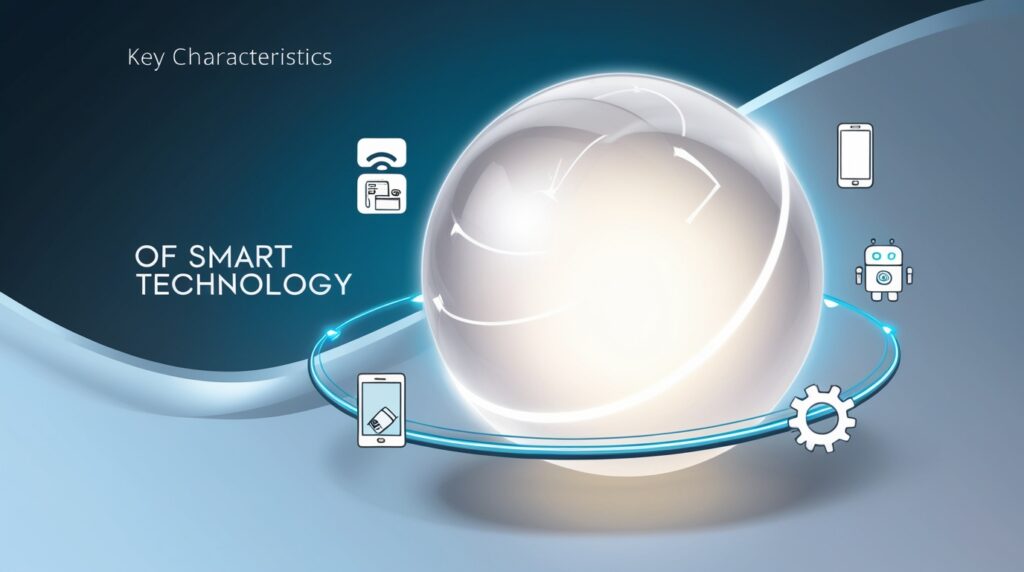Introduction to Smart Technology
In today’s fast-paced world, smart technology has become an integral part of our daily lives. From homes to industries, education to healthcare, smart tech devices are revolutionizing how we interact with the world. But what exactly is smart tech? At its core, smart technology refers to devices or systems that are connected, interactive, and capable of autonomous decision-making. These devices leverage the power of Artificial Intelligence (AI), machine learning, and Internet of Things (IoT) to provide enhanced functionality, efficiency, and convenience.
Key Characteristics of Smart Technology

1. Connectivity
Smart devices are interconnected through wireless networks such as Wi-Fi, Bluetooth, or 5G. This connectivity enables them to communicate and share data seamlessly, creating a synchronized system.
2. Automation
Smart tech minimizes human intervention by automating tasks. For instance, a smart thermostat adjusts the temperature based on your habits and preferences without manual input.
3. Data Processing
Equipped with sensors and data analytics capabilities, smart devices collect, process, and respond to real-time data to optimize performance.
4. Interactivity
Users can interact with smart devices through user-friendly interfaces, voice commands, or mobile applications, enhancing convenience and usability.
Examples of Smart Technology in Everyday Life

Smart Homes
The concept of smart homes has gained significant traction, thanks to devices such as smart thermostats, lighting systems, and security cameras. These devices are designed to improve energy efficiency, safety, and comfort. For instance:
- Smart Lighting: Adjusts brightness based on natural light conditions.
- Smart Locks: Allow remote locking/unlocking and provide notifications of unauthorized access.
- Smart Speakers: Integrate voice assistants like Alexa or Google Assistant to control various aspects of the home.
Healthcare
In the healthcare sector, smart technology is saving lives and improving patient outcomes. Devices such as fitness trackers, smart insulin pens, and remote monitoring systems collect vital health data, enabling proactive healthcare management. Some notable examples include:
- Wearable devices like Fitbit or Apple Watch for real-time health monitoring.
- Smart pill dispensers that remind patients to take their medication.
Transportation
Smart transportation systems aim to reduce traffic congestion, enhance safety, and promote sustainable travel. Key developments include:
- Autonomous Vehicles: Self-driving cars that use AI and sensors to navigate roads safely.
- Smart Traffic Management: Systems that optimize traffic flow using real-time data.
- Ride-Sharing Apps: Apps like Uber and Lyft streamline commuting options.
Education
In education, smart technology fosters interactive and personalized learning experiences. Examples include:
- Smartboards: Digital whiteboards that enhance collaborative learning.
- Educational Apps: Tools that provide tailored learning paths for students.
- AI Tutors: Systems like ChatGPT that assist in learning complex subjects interactively.
Retail
Retail businesses are leveraging smart tech to enhance customer experience and optimize operations. For instance:
- Smart Shelves: Detect low stock levels and send automatic restock alerts.
- Cashier-less Stores: Systems like Amazon Go enable seamless shopping without checkout lines.
- Personalized Recommendations: AI-driven suggestions based on browsing and purchase history.
The Role of Artificial Intelligence in Smart Technology
Artificial intelligence is the backbone of smart technology. It enables devices to learn from data, identify patterns, and make decisions autonomously. AI-driven systems power:
- Natural Language Processing (NLP) for voice assistants like Siri.
- Machine Learning Algorithms for predictive maintenance in industries.
- Computer Vision for facial recognition and augmented reality applications.
Benefits of Smart Technology

1. Increased Efficiency
By automating routine tasks, smart tech reduces time and effort while improving productivity.
2. Cost Savings
Energy-efficient devices like smart thermostats help cut utility bills, and predictive maintenance reduces repair costs.
3. Enhanced Safety and Security
From smart cameras to motion detectors, security systems powered by smart tech keep homes and workplaces secure.
4. Improved Quality of Life
With features such as remote access and personalized settings, smart technology enhances convenience and comfort.
5. Environmental Sustainability
Smart devices optimize resource use, contributing to energy conservation and a reduced carbon footprint.
Challenges and Concerns in Smart Technology Adoption

Despite its many advantages, the adoption of smart technology comes with challenges. These include:
1. Privacy and Security Issues
With devices collecting sensitive data, ensuring privacy and security remains a major concern.
2. High Initial Costs
The upfront investment in smart devices can be significant, limiting accessibility for some users.
3. Dependence on Internet Connectivity
Smart systems rely heavily on stable internet connections, which can be a limitation in certain areas.
4. Interoperability Issues
Lack of standardization among manufacturers can lead to compatibility issues between different devices.
The Future of Smart Technology

As technology continues to evolve, the potential applications of smart tech will expand further. Emerging trends include:
- Smart Cities: Urban areas equipped with smart infrastructure for energy management, waste disposal, and public safety.
- Healthcare Innovations: Advanced wearables for early disease detection and AI-driven diagnostics.
- Sustainability Efforts: Smart systems for renewable energy integration and efficient resource management.
- Enhanced AI Capabilities: More sophisticated decision-making and natural language interactions.
Conclusion
Smart technology is redefining the way we live, work, and interact with the world. Its far-reaching applications and benefits make it a cornerstone of the modern digital era. While challenges exist, the continued development and adoption of smart tech promise a future of enhanced convenience, safety, and efficiency.




